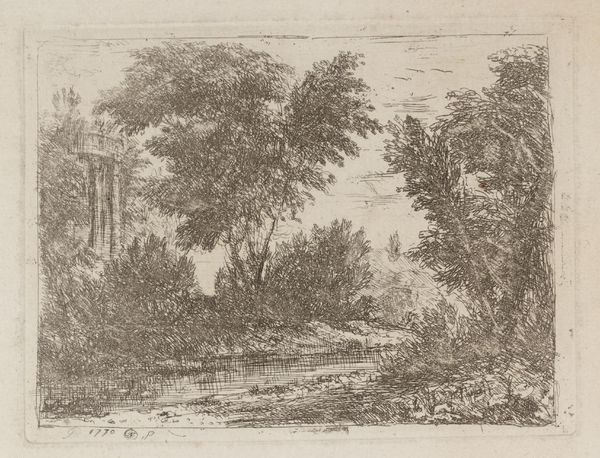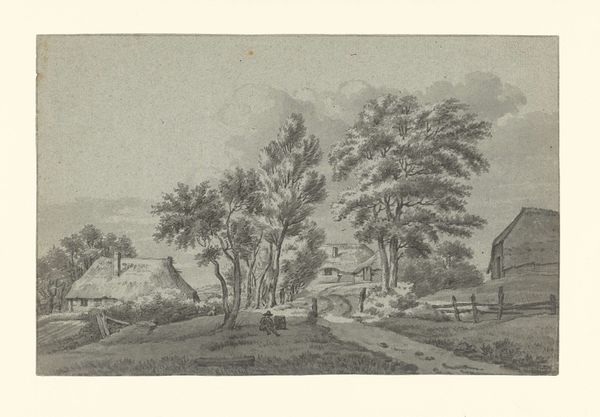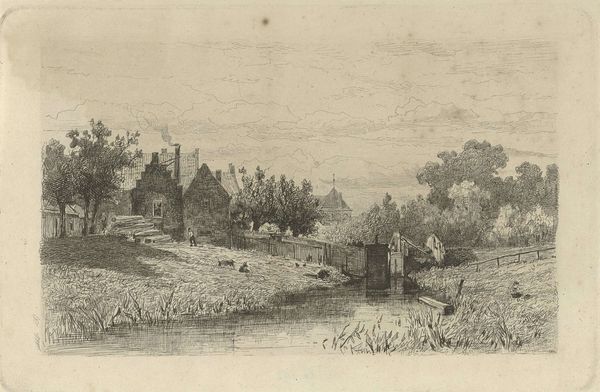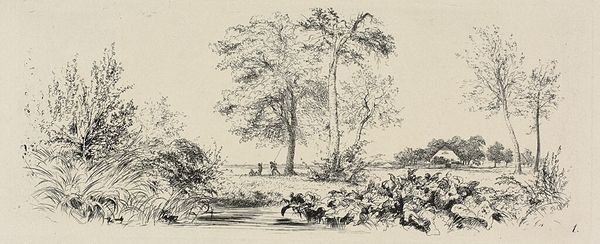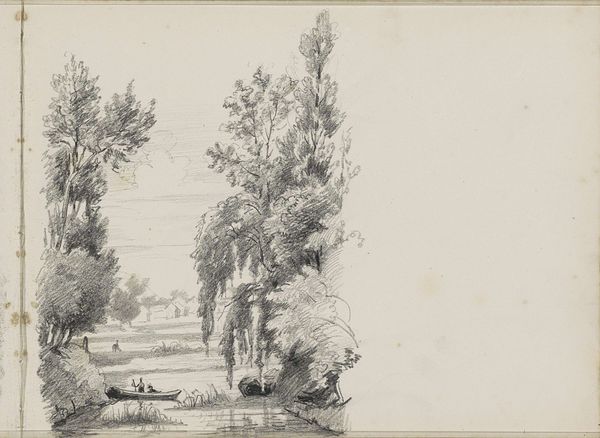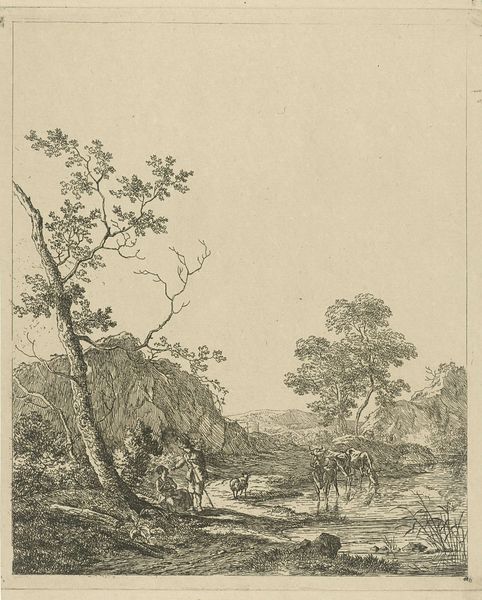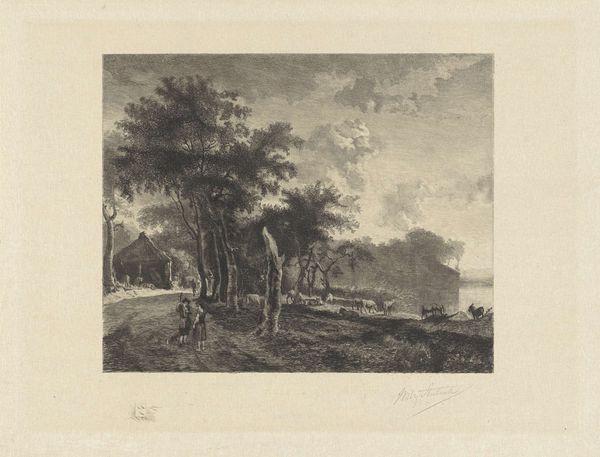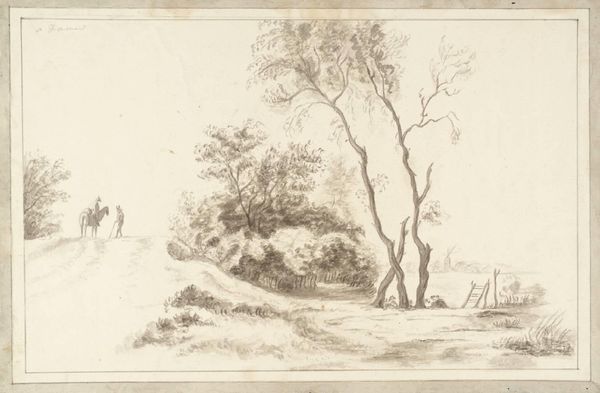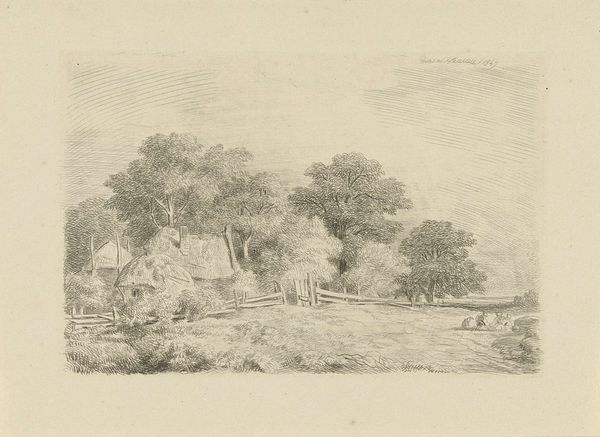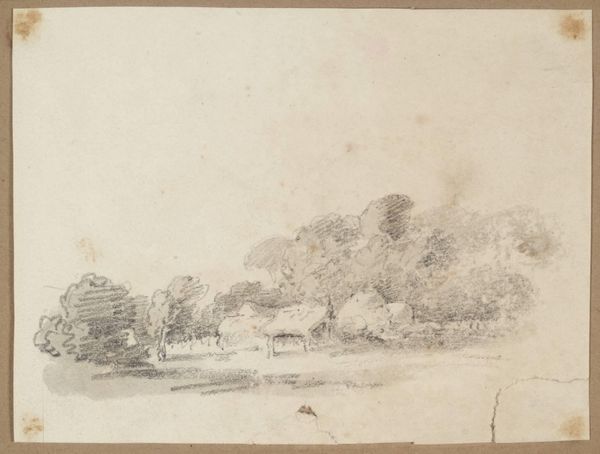
drawing, etching
#
drawing
#
baroque
#
etching
#
landscape
Dimensions: height 205 mm, width 279 mm
Copyright: Rijks Museum: Open Domain
Gilles Demarteau’s etching presents a seemingly simple scene: a landscape with a farm, a body of water, and a woman washing clothes. The mundane imagery holds deeper symbolic resonance. Water, an essential element of life, is depicted alongside the labor of cleaning, representing purification. Yet, the gesture of washing has echoed through art history, appearing in countless depictions of biblical scenes, such as Christ washing the feet of his disciples. The act is a powerful symbol of humility and renewal. Think too of Lady Macbeth and her obsessive hand washing, an external manifestation of internal turmoil, as the compulsion towards cleanliness becomes a mark of indelible guilt. Demarteau’s tranquil rendering evokes a similar, yet gentler, undercurrent of cleansing—the psychological weight we attach to the desire for purity, order, and freedom from the grime of existence. The humble act of laundering clothes engages our collective memory, tapping into primal associations between water, cleanliness, and spiritual health. The visual language of purification persists through time, a testament to our ongoing quest for both physical and psychological renewal.
Comments
No comments
Be the first to comment and join the conversation on the ultimate creative platform.

